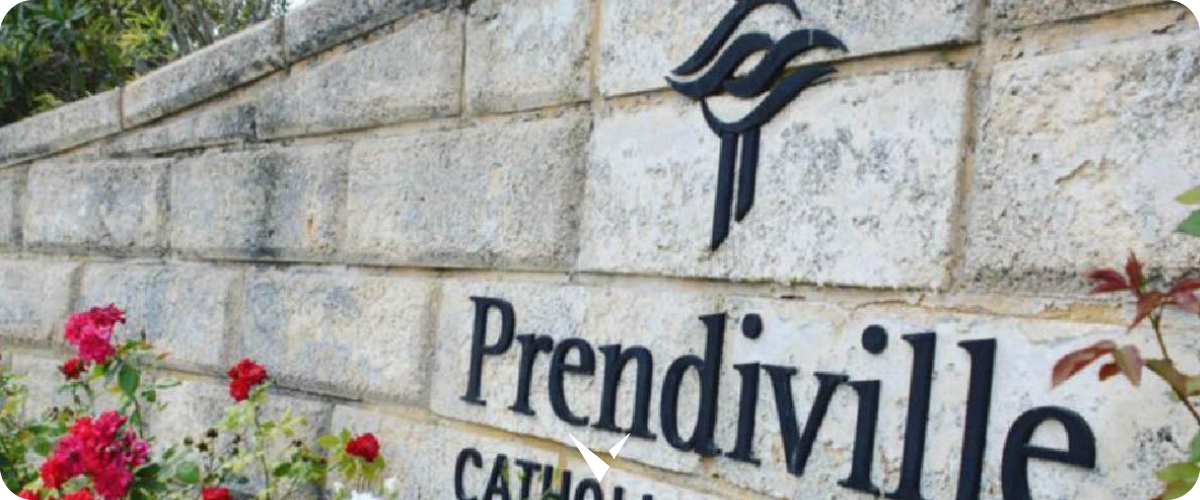
Prendiville Catholic College has a reputation as a progressive school and has already invested substantially in rooftop solar generation. For the new Director of Innovation, James Maitland, that was proof that the school was prepared to embrace technology. When it came to the learning environments, his challenge was to leverage existing investments and find a way to standardize the technology used, in order to form a strategy for the future. This is the story of his progress.
The Challenge
Classrooms and public areas already had a mixture of technology, from electronic whiteboards all the way through to a handful of Vivi units. The question was how to prove they could all work together.
The Outcome
Vivi has demonstrated the ability to work with all types of digital displays in the school. As well as gaining teacher buy-in, it has opened up the school to the possibilities Digital Signage will bring to student engagement and emergency management.
With the help of Vivi, Prendiville Catholic College has been able to:
1. Bring unused displays to life
The school is using Vivi’s digital signage feature to display videos and other media about school alumni in its library. This is highly engaging for students and a perfect way to reinforce the school’s history and culture.
2. Delegate control of public-facing screens to the PR team
This provides the PR team with instant and total control over messaging to the public, without the need to engage IT support.
3. Leverage investment in a variety of displays, by using Vivi to bring them together
The flexibility and simplicity of Vivi mean it can be used with a wide range of displays. That means the school can use what equipment it already has, while still gaining the messaging and learning benefits the system has to offer.
“What room am I in? When it comes to Vivi, that’s the extent of the technical support we have to provide teachers with.”
James Maitland, Director of Innovation, Prendiville Catholic College.

Challenge
In January, 2020, when James Maitland started his new role as Director of Innovation at Prendiville Catholic College—a 7-12 Catholic college in the northern suburbs of Perth, Western Australia—the school was using a wide range of technologies. Almost all of its 78 learning areas were equipped with some kind of AV equipment; digital whiteboards, projectors and televisions, and even a handful of Vivis. Each had found its place in the classroom and was being used to varying degrees by the teaching staff.
For Maitland, it was essential to find a technology that would be embraced by teachers and become central in their approach to learning in the classroom. He also wanted to standardize the technology being used; providing support to a wide range of technologies was not efficient or sustainable in the long term. The timing was perfect, too. The school was just refreshing its fleet of computers, and would need to change its cabling from VGA to USB-C connections.
Having played a key role in selecting Vivi as the ed-tech device of choice in a previous school—during a process in which Apple TV and Kramer Viagos were considered—Maitland was already familiar with the benefits of the system. He also had plenty of experience in the implementation of technology across classrooms and knew that the most important step was to ensure teachers were on board. They had to be able to see how any solution could benefit them in the classroom, otherwise there was a risk that any investment would fall by the wayside.
Solution
The first step was to talk to teachers. Maitland wanted to understand what they needed in the classroom and the kind of media they wanted to share with their students. During those conversations, he learned that the first Vivi unit had been installed in a classroom more than two years earlier. What struck him was that a more effective and controlled trial of the system was required to prove—or otherwise—its benefits, and develop a use case.
He gathered all the Vivi devices from classrooms and reinstalled them into the humanities block, a set of six learning areas used by 22 teachers. The units that were already controlling public-facing screens in the library and administrative areas were left in place, as the school was already using them for signage—particularly to inform parent helpers and publicize events, like the swimming carnival.
The day the trial went live, at the beginning of term 3, he stationed IT support in the block to make sure any potential issues were quickly ironed out. Rather than hiding the Vivi units behind the digital displays, his team positioned them front and center and included messaging on the screens to make sure teachers were aware that the room was Vivi enabled. The teachers found the on-screen instructions and the app very easy to use. In a testament to the simplicity of the Vivi system, his team reported only two questions over the entire first week.

Result
The trial continues, and early indications are extremely positive. One of the key learnings for teachers has been to stream media directly through the Vivi unit, rather than cast to Vivi from their device. This means the videos are free from any buffering issues or lag and, perhaps even more importantly, it frees up the teacher’s device.
What Vivi has brought is real connectivity to the school. It has demonstrated that it works with any type of display—even digital whiteboards—and this will ease the process of standardization of technology once Maitland has finalized his strategy.
Prendiville has made excellent use of the digital signage features that Vivi brings. In the library, five large screens sat unused for the majority of the time until a Vivi unit was used to bring them to life. Enter the library today, and you’ll find videos and pictures of school alumni playing throughout the day, something that engages the students and reinforces the culture and history of the school. The teachers themselves are engaged in digital signage, too. Whether it’s book week, NAIDOC week—a celebration held across Australia each July to celebrate the history, culture and achievements of Aboriginal and Torres Strait Islander peoples—or any other occasion, the teachers regularly pop their head into the IT support team and ask them to stream media across the classroom block.
In public areas, Maitland has delegated control of the Vivi screens to the school’s PR team. That gives them the ability to produce timely and relevant information to parents to provide instructions, advertise events, or just welcome them to the school.
The school is now looking at the role Vivi can play in emergency signage and is conducting risk assessments and developing contingency plans. Specifically, Prendiville is looking at the best ways to manage any potential lockdown or evacuation. The Vivi units provide the ability to set up shelter-in-place notifications that can be targeted at specific areas of the school, and plan to implement them once the issues caused by COVID-19 have been dealt with.



